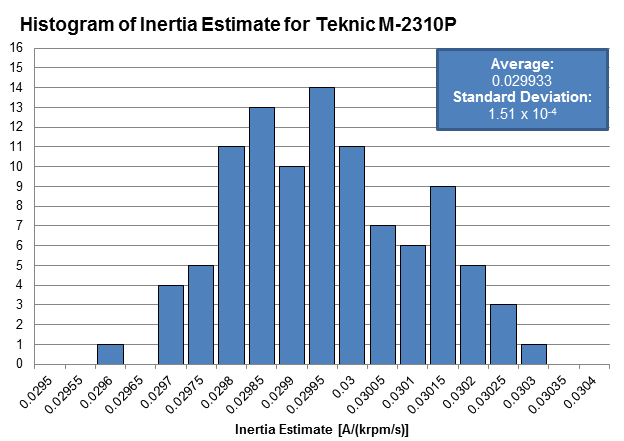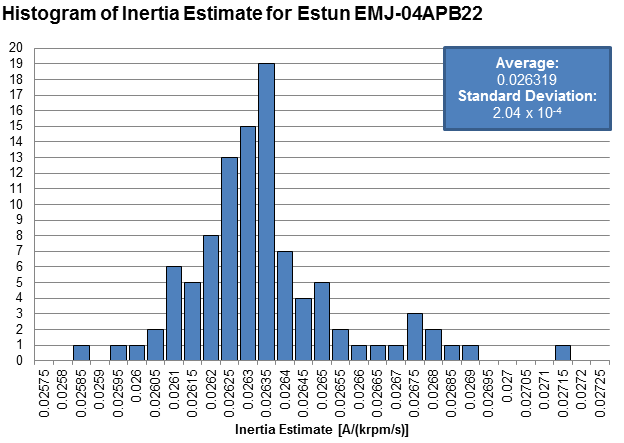SPRUHW1A June 2014 – October 2021 TMS320F28052-Q1 , TMS320F28052M , TMS320F28052M-Q1 , TMS320F28054-Q1 , TMS320F28054M , TMS320F28054M-Q1
- 1Read This First
- 1 F2805xM InstaSPIN-MOTION Enabled MCUs
- 2InstaSPIN-MOTION Key Capabilities and Benefits
- 3InstaSPIN-MOTION Block Diagrams
- 4Application Examples
- 5Evaluating InstaSPIN-MOTION Performance
- 6Microcontroller Resources
5.3.4 Inertia Estimation Repeatability
The system inertia is an important input into both SpinTAC Velocity Control and SpinTAC Position Control. The inertia value is estimated using SpinTAC Velocity Identify. SpinTAC Velocity Identify is produces a very accurate inertia estimation. In order to test the repeatability of SpinTAC Velocity Identify, the inertia identification process was ran 100 times for each motor. The results are collected in Figure 6-14 and Figure 6-15.
 Figure 5-14 Inertia
Estimation Results for Teknic M-2310P
Figure 5-14 Inertia
Estimation Results for Teknic M-2310P Figure 5-15 Inertia
Estimation Results for Estun EMJ-04APB22
Figure 5-15 Inertia
Estimation Results for Estun EMJ-04APB22From the above results, it is clear that SpinTAC Velocity Identify has a very high degree of repeatability. It is not required that the inertia estimation that is provided to the SpinTAC controller be the perfect inertia value. As a robustness feature, a SpinTAC speed controller can accept a wide range of inertia changes. However, the SpinTAC speed controller will always produce the best performance if the inertia value provided to it is accurate.